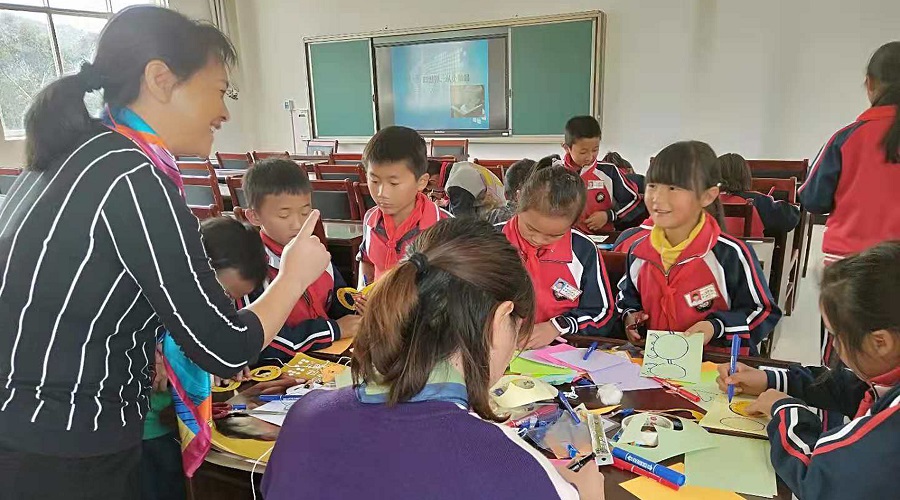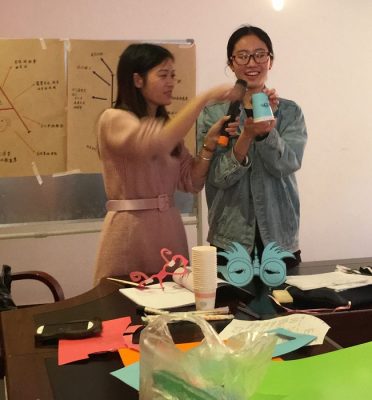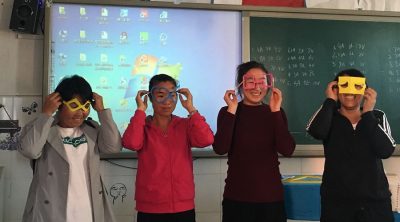Join a powerful, unprecedented alliance for better eye health for all.
Join IAPB-
Choose an alternate language here

Increasing numbers of school-aged children in China are presenting with visual impairment, with myopia making up the vast majority of cases. This is partly due to the fact that children have a heavy study burden, which leads to more time reading from text books and computer screens. There is no systematic eye health education within the existing system, which results in low awareness and a lack of knowledge of eye health among parents and children. In China, particularly rural areas, school teachers are key leaders in the community. They are well respected and parents listen to the advice they provide. Within the Seeing is Believing Phase V Project, Comprehensive Rural Eye care model in Yunnan Province, we developed activities that used school teachers and their influence to raise eye health awareness among students and in the community. Since the start of the project in 2016, school teachers across six locations have been involved (two prefectures and four counties) in Yunnan Province. As of the end of 2018, more than 500 schoolteachers from 50 schools have been trained in providing school eye health education and referral pathways, both for school children and people in the community.
At the initiation of this project, a set of school eye health education manuals were developed, including a teacher’s manual and a student workbook. In this manual, eye health knowledge was broken down into six units for primary school students from Grades 1-6 according to levels of difficulty. The manual was developed by an international children’s health education expert based on her extensive primary education experience. All the lessons were combined with interactive activities suitable for children to partake in during the learning process. This participatory method of learning is very different from the traditional Chinese ‘lecture’ approach to teaching, and aims to make learning eye health knowledge fun and interesting in a way that suits children’s learning needs.

With support from local education bureaus in the project locations, training of trainers was provided to the primary school teachers in the six project locations. The training covered knowledge of children’s eye health, basic skills in identifying early signs of eye problems, how to conduct primary eye screening for school children, how to use the manual and how to provide eye health education. The training not only increased the teachers’ knowledge and skills in eye health education, but also in the aforementioned participatory education methodologies that they had either never learnt or applied before. According to one of the teachers that attended the training, “During this training, I learned how to prevent myopia and prevent various eye diseases, and I will apply this knowledge by telling stories or playing animations to explain to the students.” One government official from the County Education Bureau expressed their confidence in the manual being replicated in more primary schools.
While this project is primarily focused on school eye health, it also seeks to ensure that eye health messages reach members of the students’ families and communities. In the student workbook, there are not only activities for children to complete during class, but also home activities for them to follow up after class. For example, in the first lesson in the manual, “What does the eye look like?” the home activity is to ask the children to look into their grandmother or grandfather’s eyes to and compare how different they are from their parents’. This activity raises eye health awareness among other members of the family and allows the trained school teachers’ lessons and influence to extend beyond the classroom.

Furthermore, in China, at the beginning of every school semester, schools organize a parents’ meeting that requires parents of every child to attend. The trained school teachers take this opportunity to deliver eye health awareness sessions that encourage the parents to take care of their children’s eye health as well their own, and to access to eye care when necessary.
By involving school teachers as focal points, eye health information and knowledge is spread not only to children, but to the community as well. As previously mentioned, using teachers as eye health advocates is particularly effective as they are seen as trusted, knowledgeable leaders within their communities. In turn, this helps to improve the wider community’s awareness of eye health and encourages timely utilization of eye health services.
Following this pilot, more and more schoolteachers and local education bureaus have now asked to join this project. In August 2018, the Chinese national government launched ‘The Comprehensive Plan to Prevent Near-sightedness among Children and Teenagers’, which involved eight ministries, including the Ministries of Education and Health. The Plan aims to prevent and control myopia among school children, and requires health and education departments at all levels to develop school eye health education activities to raise awareness among both children and parents. To support local responses to this Plan, the successful experiences and effective approaches of our school eye health model (including the school teacher training program, education manual and learning materials) will be promoted to the provincial authorities for province-wide replication. At the end of the project in early 2019, we hope provinces will either pilot the whole model or adopt components of it based on local contexts. In addition, the model will be applied in The Foundation’s forthcoming school eye health projects in other provinces for nationwide impact.
Ms WANG Jing,
Senior Project Officer,
Ms. NI Ming,
Project Manager,
Ms. Amanda Huang,
Country Manager,
The Fred Hollows Foundation China